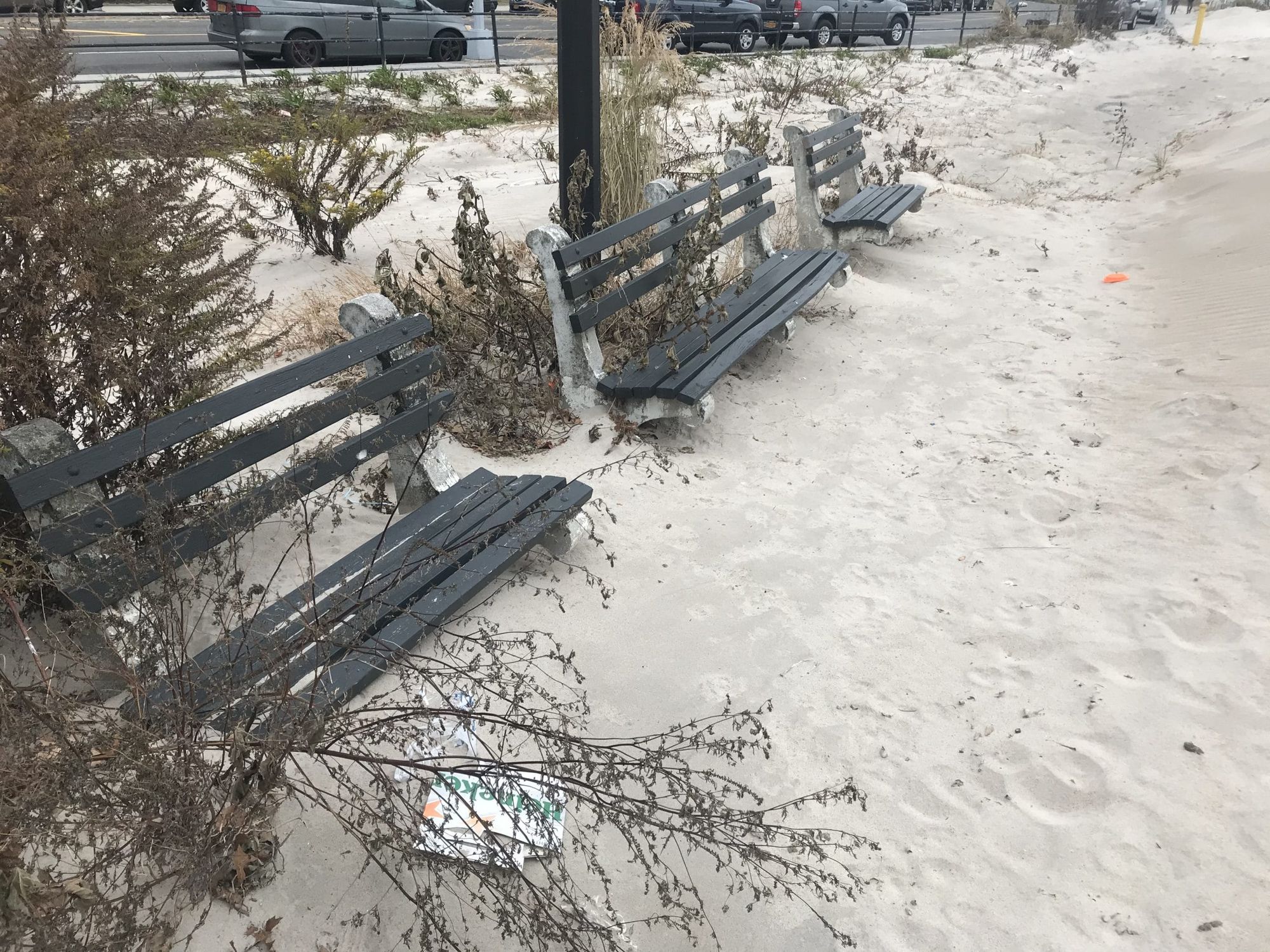Locals Fear New Projects at Coney Island Creek Will Worsen Pollution


CONEY ISLAND —Southern Brooklyn’s sole remaining creek has gained more attention with the upcoming opening of a ferry dock, but residents are hoping that its newfound spotlight will also address water quality issues and pollution.
Coney Island Creek was once part of a salt marsh that extended all the way to Sheepshead Bay, but was filled in by land development and treated as a dumping ground for decades by builders. In the 1960s, Fred Trump, the father of the future president, was fined for filling and polluting the creek when he owned and developed the Beach Haven apartment complex.
More recently, Beach Haven—now under different ownership—was discovered in 2016 to be dumping 200,000 gallons of raw sewage a week into the creek. The management company of the complex was cuffed with a $400,000 fine.
When developers partially filled the creek in the mid-1900s, residents thought that was the worst of it. But the remaining 2-mile tidal estuary still faces problems with water quality and pollution, in addition to the looming threat of strong storms and sea-level rise.
The last time the creek drew this much attention was in 2012 after Hurricane Sandy. The creek was a major source of “backdoor flooding” during the storm.
“This is the backyard of the community,” said Pamela Pettyjohn, president of the Coney Island Beautification Project, a local civic organization. “After Hurricane Sandy, people were afraid of the water.”
Plans for a ferry have raised concerns about dredging up further contamination from the bottom of the creek and disturbing the marine life. The creek is used for swimming, kayaking, bird watching, and fishing, and residents would like to see it in better shape.

“We would see the creek, and see idle sludge, like sewage. I thought, ‘Why doesn’t someone care about this?’” said Alfie Davis, a retired substance abuse school counselor, who has lived in Coney Island for over 40 years.
The Economic Development Corporation is planning on restoring the creek’s bulkhead between Cropsey Avenue and West 23rd Street, with the goal of protecting against rising sea levels and storms in the short-term. Construction is expected to begin in 2021.
Residents, environmental advocates and community leaders nearly filled the education hall of the New York Aquarium at a workshop about the creek on November 16, where they discussed issues of access and pollution.
One topic of discussion was the ferry route, which will run between Coney Island and pier 11 in lower Manhattan, and is also slated to begin in 2021. The environmental impacts of two possible locations are under review – one at 29th Street and Neptune Avenue with the other at Bayview Avenue and 33rd Street.
Noah Chesnin, policy program manager for the Wildlife Conservation Society’s New York Seascape initiative, says that just being out on the ferry can be an incredible way to experience the water.
“The pier itself can be used as well as a way to get local school students to access the water and can be used for scientific research. There’s a lot of potential benefits,” said Chesnin. The ferry isn’t the only construction project drawing concern. There has been pushback from regional environmental groups concerned with the Army Corps of Engineers’ series of proposals to construct storm barriers and seawalls to protect New York City’s coast and neighboring areas.
The Corps is in the planning stages of its New York and New Jersey Harbor and Tributaries study. Clean water advocates are concerned about the contamination and induced flooding risks to nearby estuaries that could come with closing off a large section of the harbor.
The Corps did not respond to requests for comment.

A variety of land and marine wildlife live in or around the creek, including egrets, swans, ribbed mussels, horseshoe crabs, oysters, and many fish that come to spawn. Information about these species is posted on small plaques along the side of the creek on Bayview Avenue.
“Healthy estuaries are nursery grounds for a lot of fishery species before moving out to the ocean as well as habitat for many shellfish species,” said Helen Cheng, a coastal resilience expert at the Science and Resilience Institute at Jamaica Bay.
“The wetlands along the coastlines of estuaries provide protection against erosion, improve water and air quality, regulate nutrient processes, and provide habitat,” she added.
Yet water contamination due to dumping and raw sewage overflows still plague the creek and threatens wildlife. Runoff from stormwater and combined sewer overflows contribute to the presence of fecal pollution in the water, according to The River Project, an environmental watchdog group.
Pollution data showed consistently high levels of bacteria common in fecal matter in the creek. Samples taken at Kaiser Park area, for example, only once met the acceptable standard for swimming. The Department of Environmental Preservation installed signage around the creek in March 2018, urging residents to contact 311 if they noticed sewage discharging from stormwater outfalls into the creek.
Residents like Davis, for whom the creek is part of the fabric of her neighborhood, hope that the renewed attention will lead to a better future.
“The people who live here are dealing with the gunk,” said Davis. “They need to find something useful for the community soon.”




